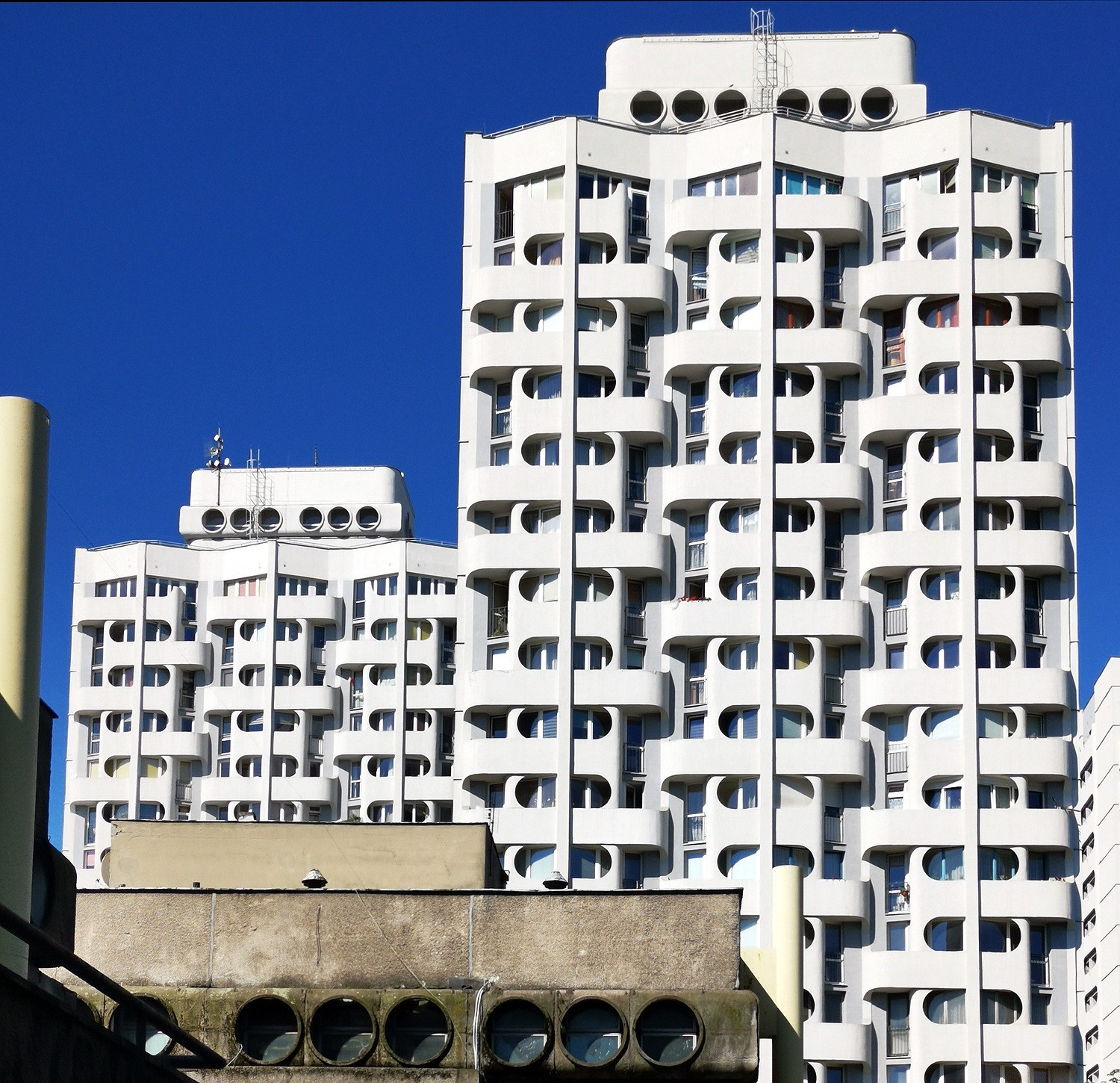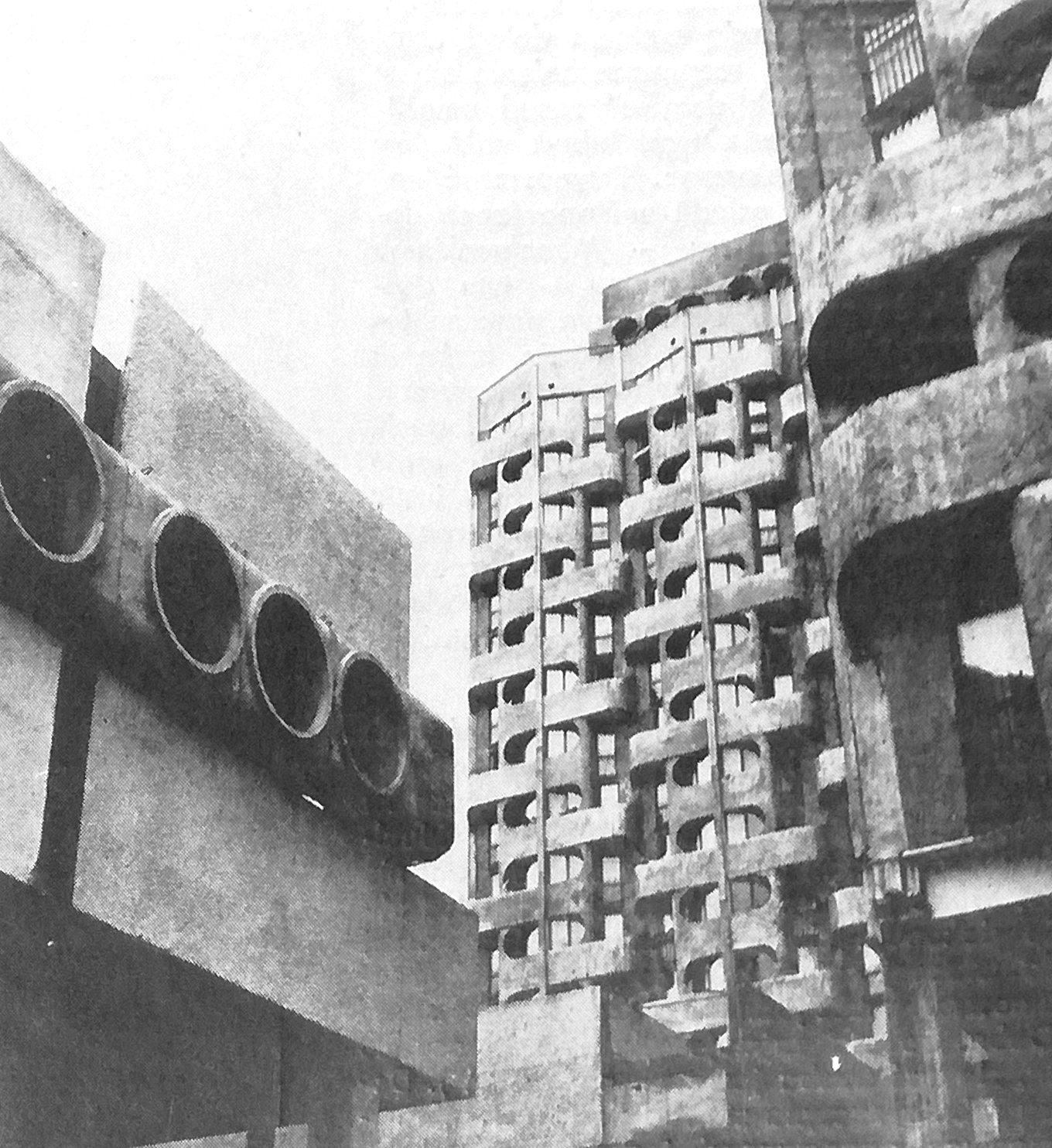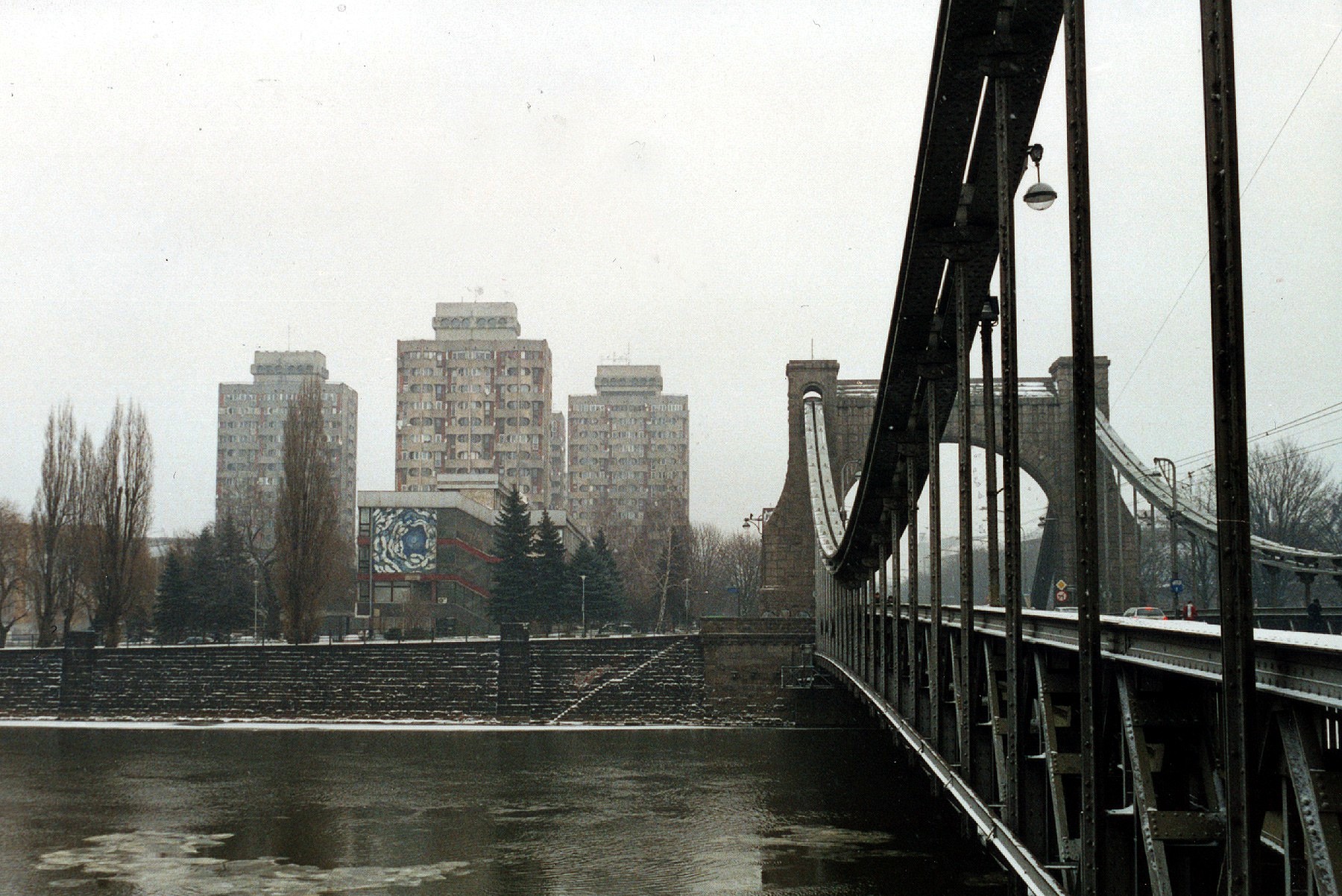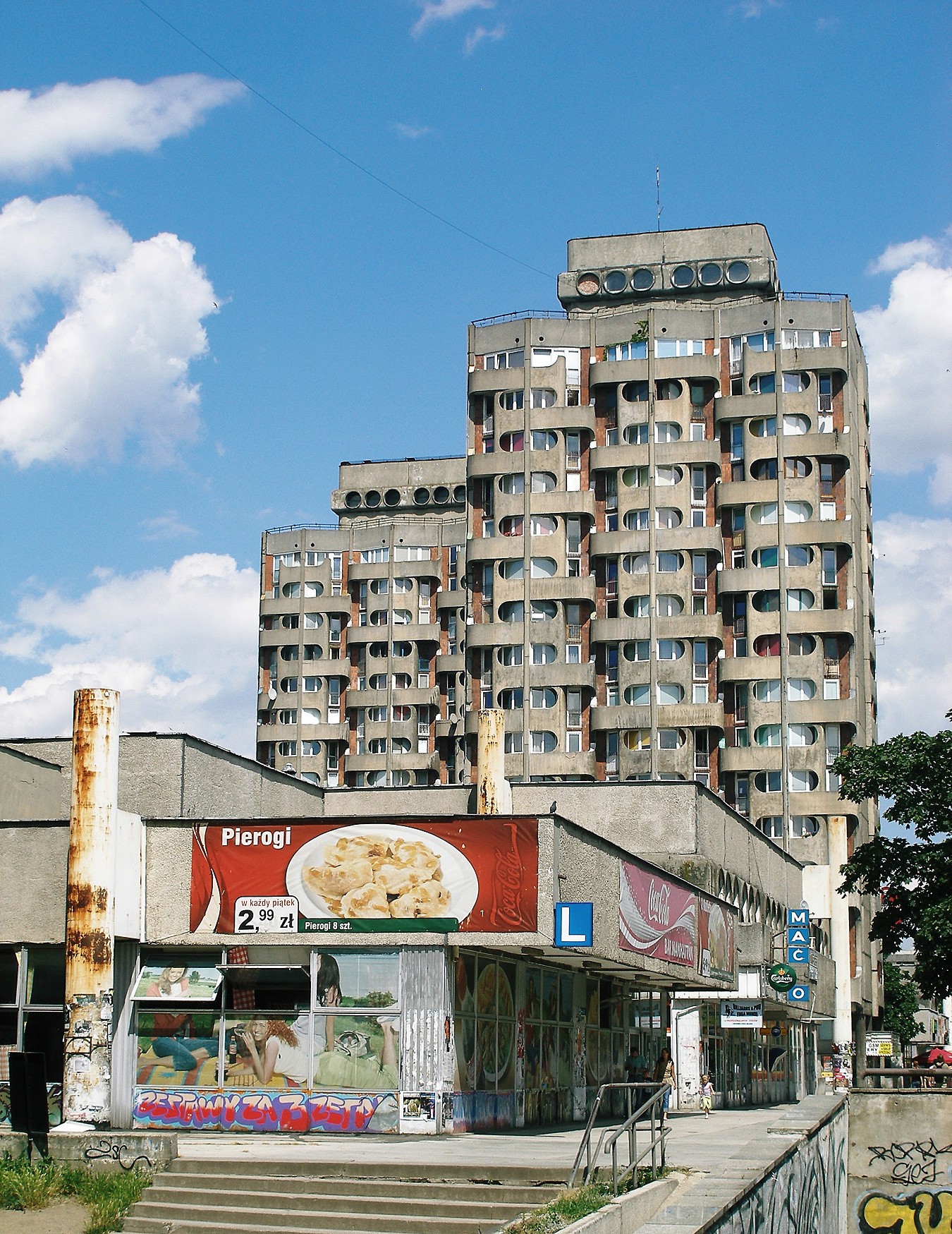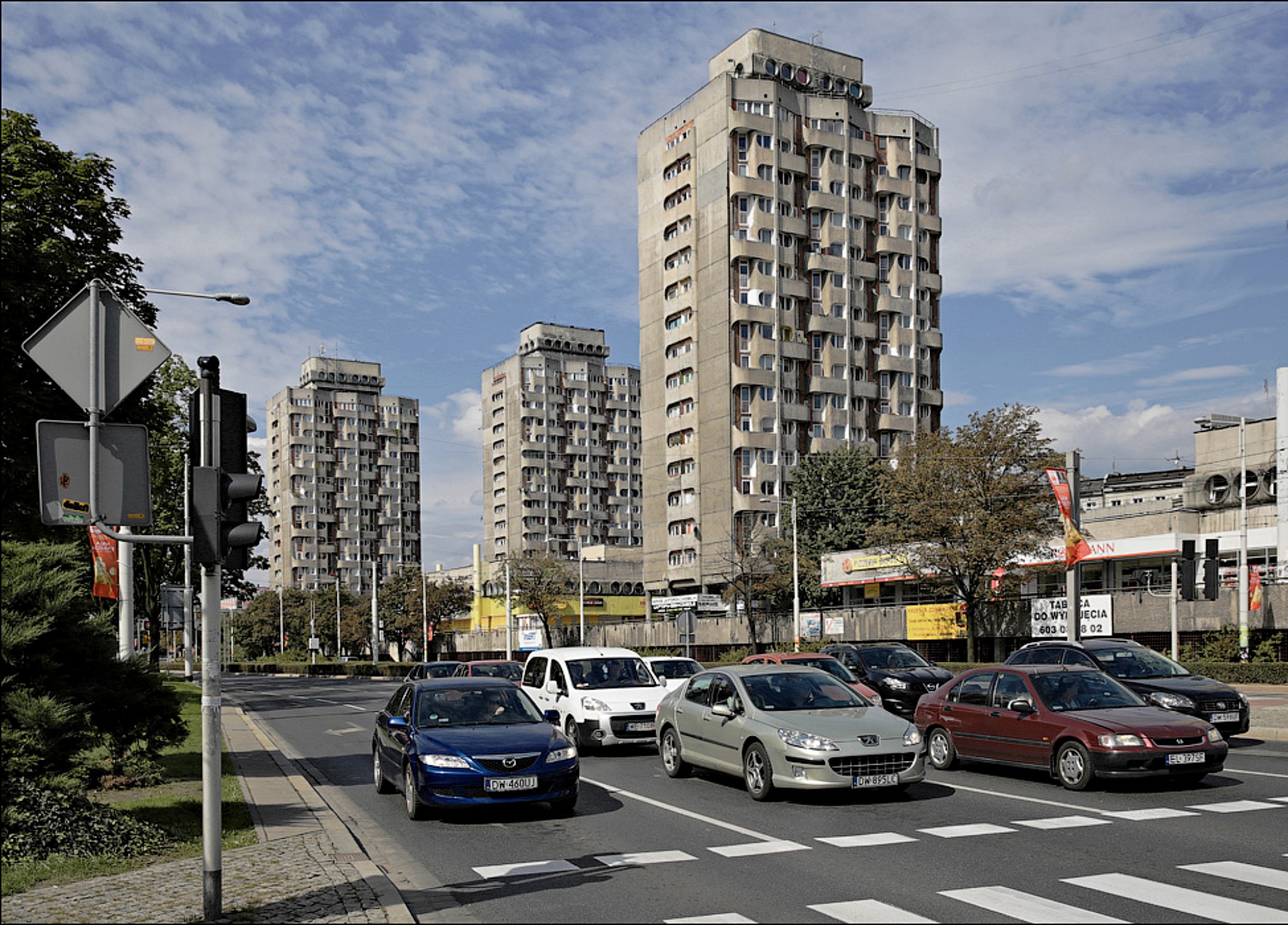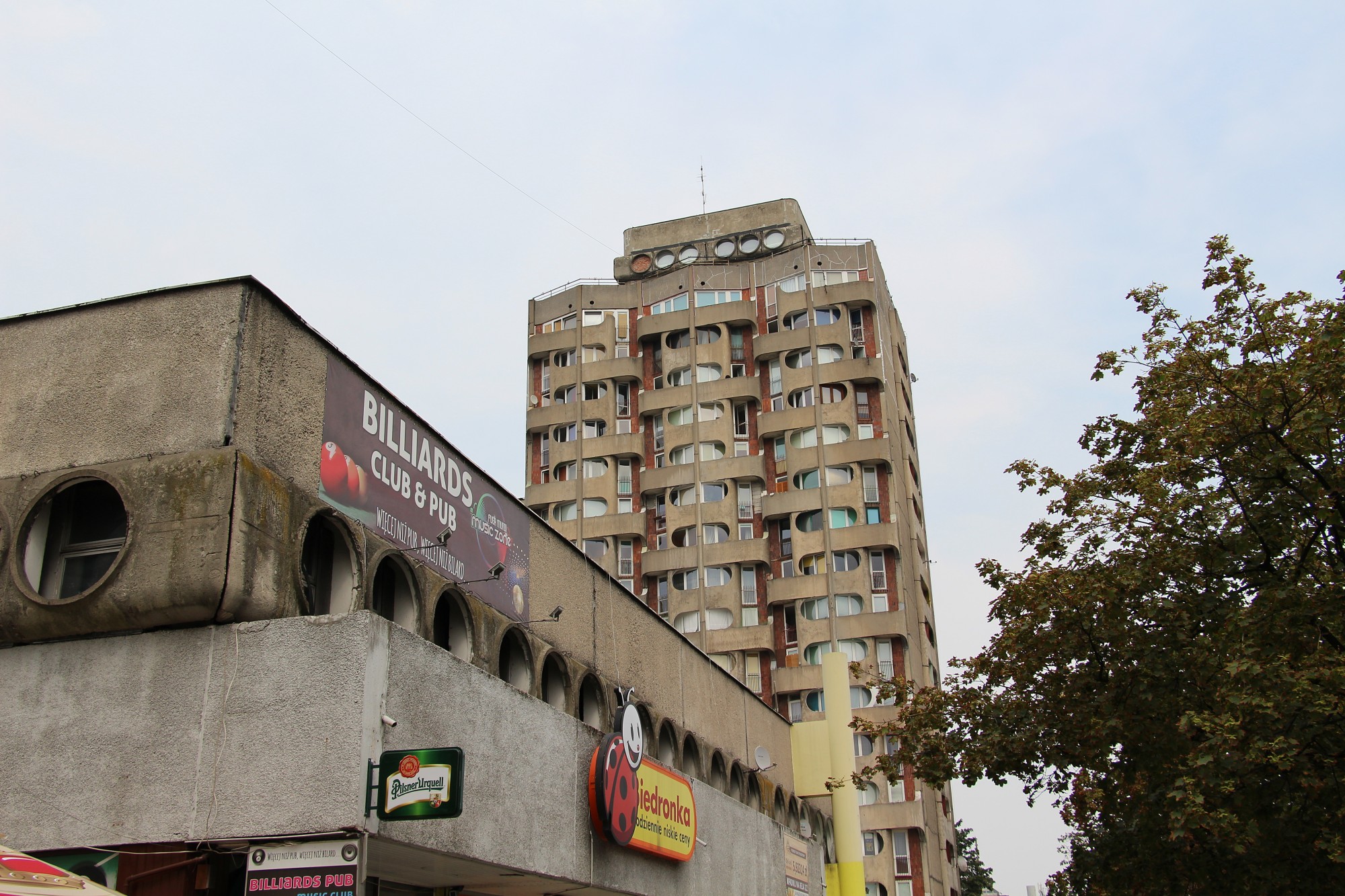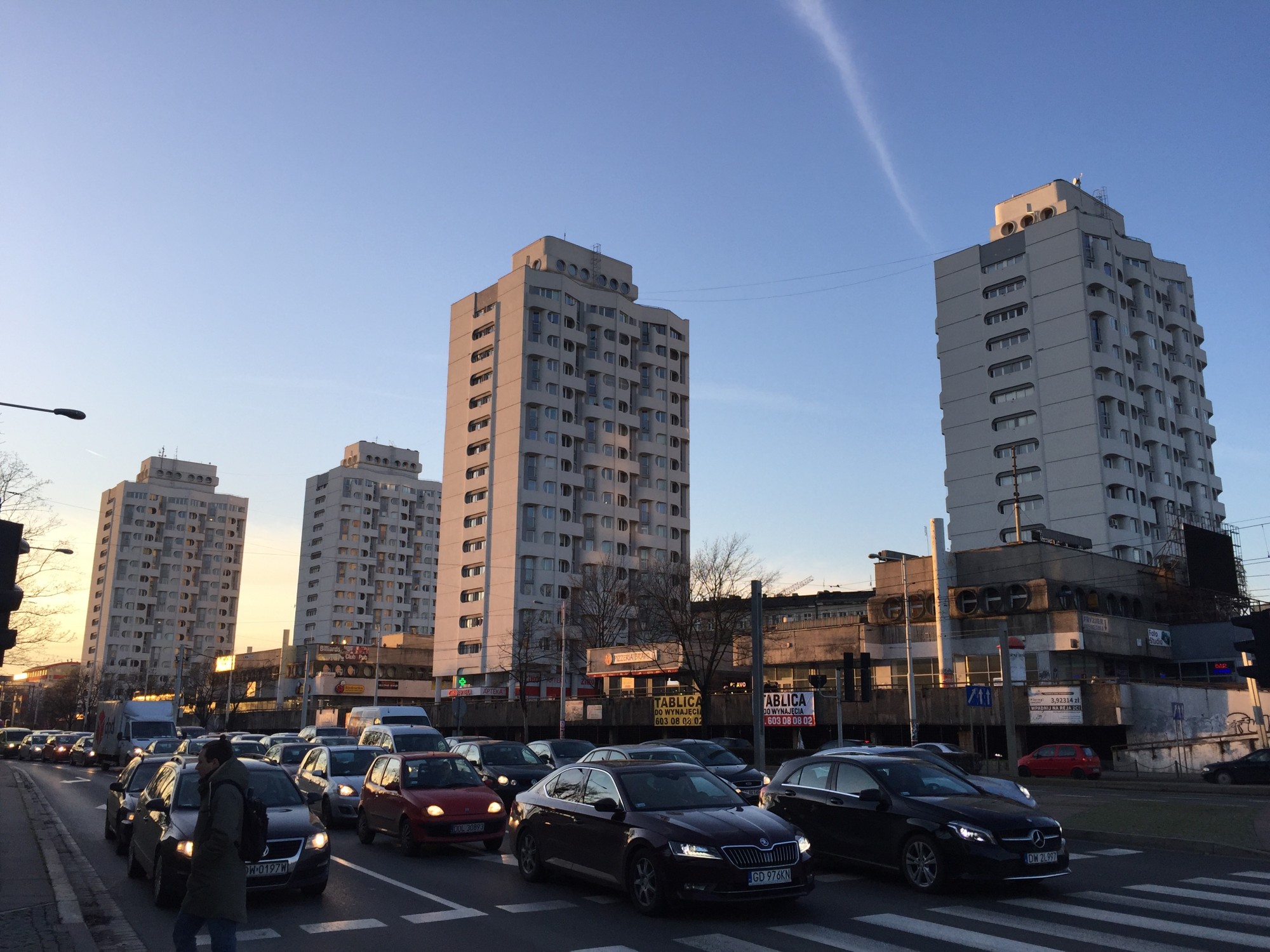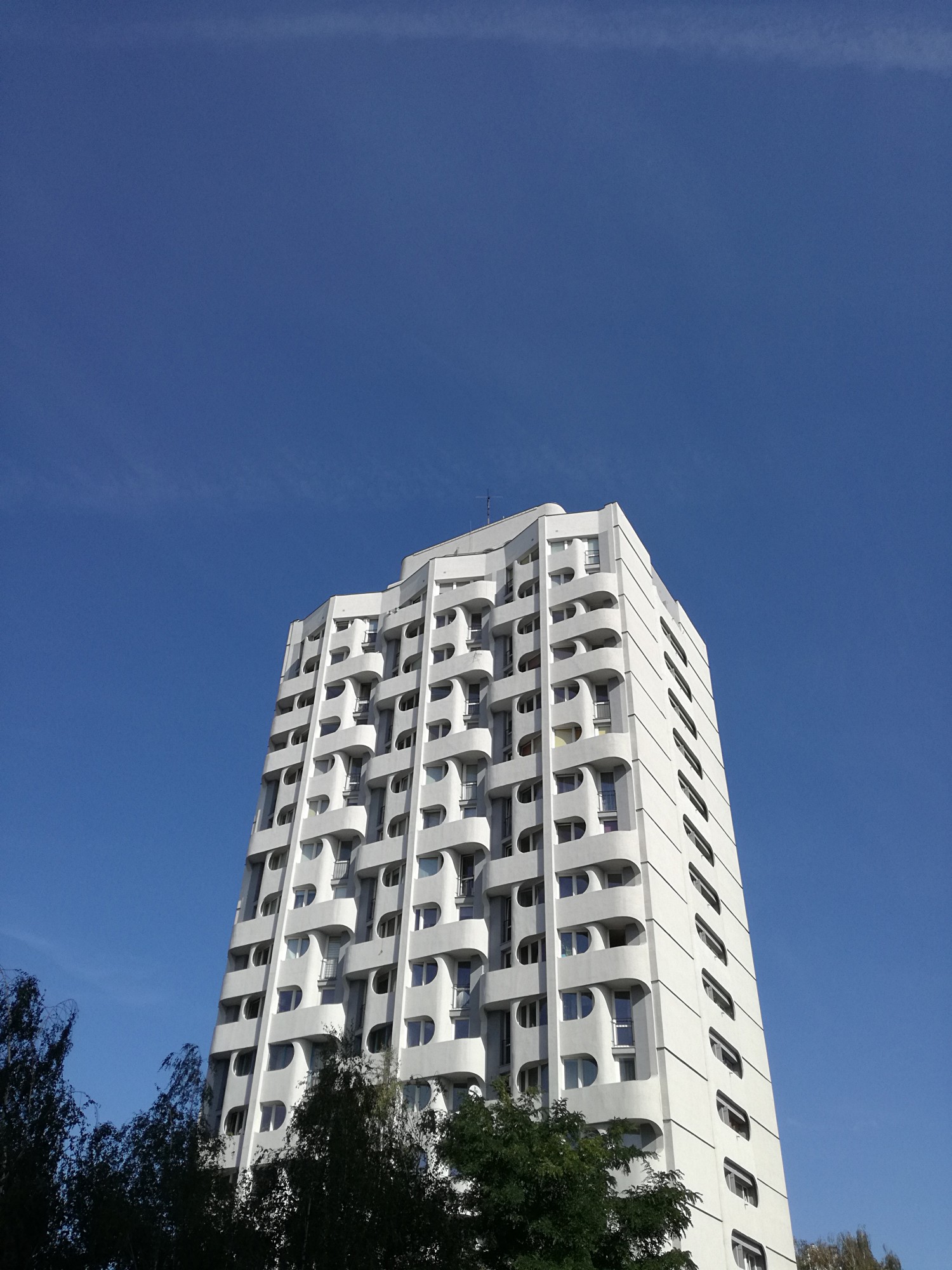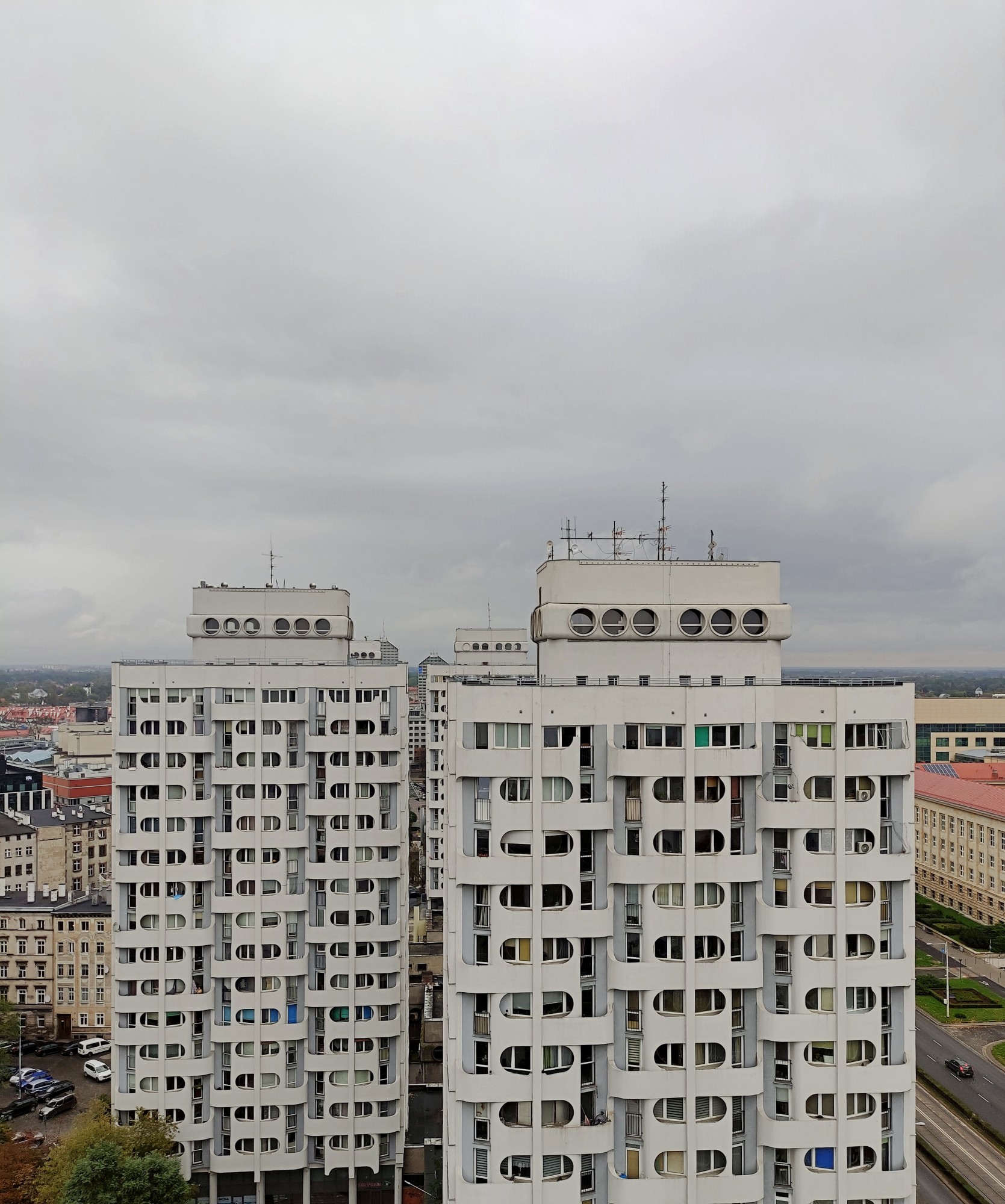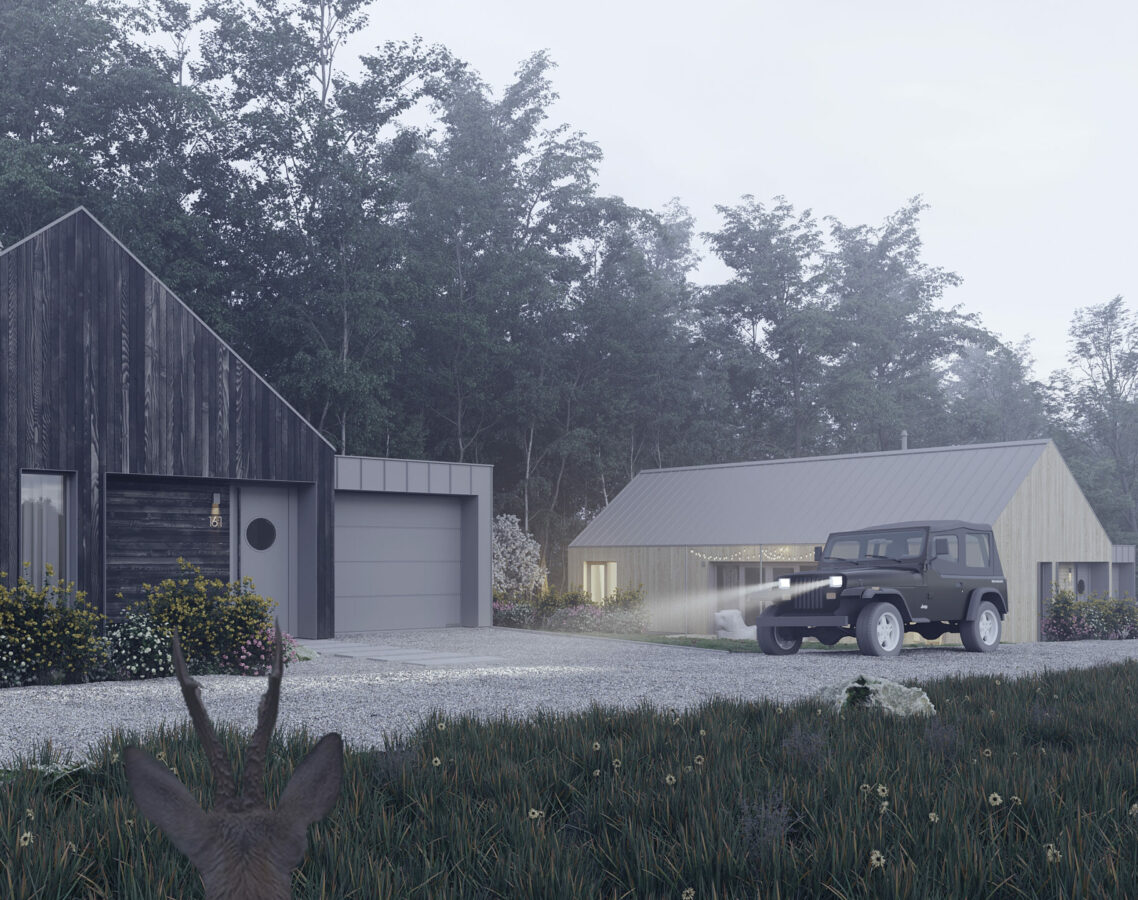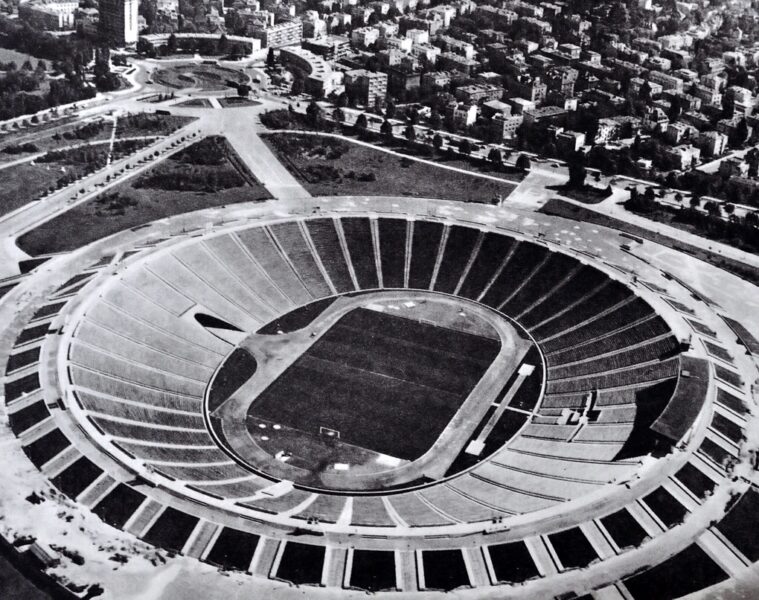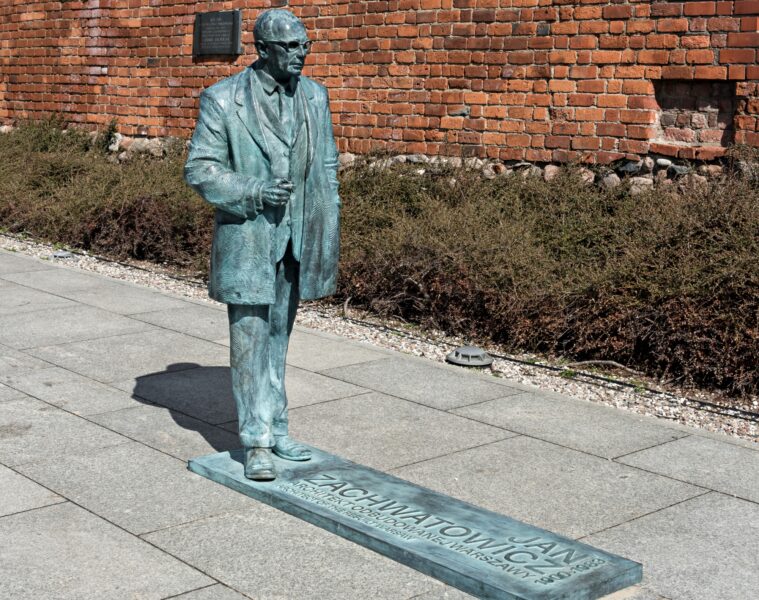Wrocław’s complex of residential and commercial buildings, standing at Grunwaldzki Square and Maria Curie-Skłodowska Street, known as Manhattan or Sedesowce (because of the oval window recesses), is one of the icons of the capital of Lower Silesia. The complex was built in 1970-1973 to a design by Jadwiga Grabowska-Hawrylak in cooperation with Zdzisław Kowalski and Włodzimierz Wasilewski by Wrocławskie Przedsiębiorstwo Budownictwa Ogólnego
The complex consists of six 55-metre-high (16-storey) skyscrapers and commercial pavilions, all standing on a concrete platform supported by 240 piles. The design called for white concrete skyscrapers, finished with clinker bricks and exotic wood at the balconies, with climbing plants in the rounded recesses of the facades and grass roofs of the retail pavilions. According to the architect, the whole was intended to give the investment a Mediterranean atmosphere
Wrocław Sedesowce in 2022. Source: Joee, CC BY-SA 4.0, via Wikimedia Commons
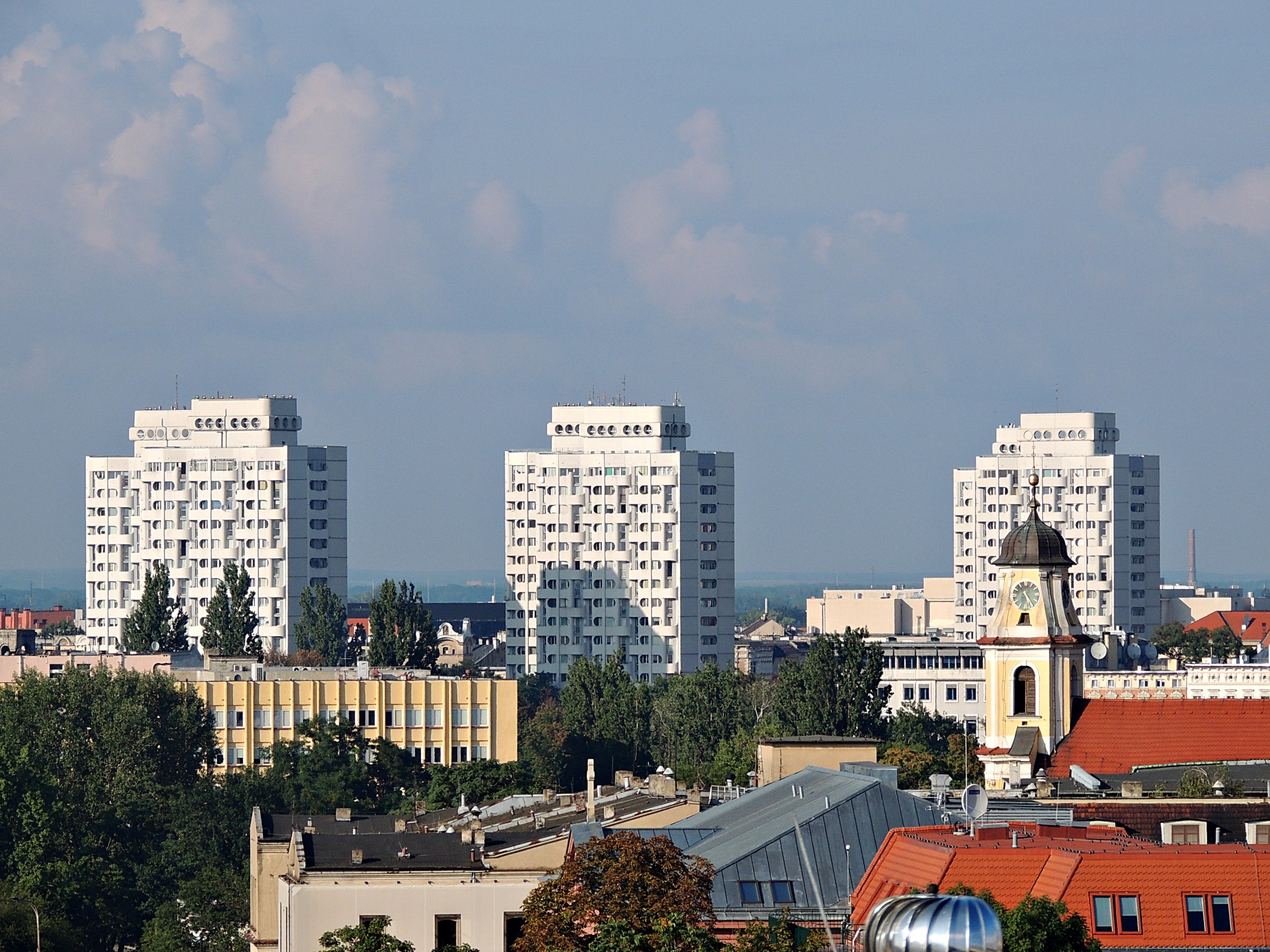
Unfortunately, during implementation, the project was truncated and modified in order to cut costs by using low-quality building materials. Architect Jadwiga Grabowska-Hawrylak managed to realise viewing terraces with common rooms equipped with bathrooms on the roofs of all residential blocks. She covered the balconies with clinker, and used prefabricated elements of an unusual form for the blocks. In the end, all the buildings were made using the then cheapest grey concrete, which was completely different from the original plans for the appearance of the high-rise blocks, not to mention the lack of any vegetation and the tar paper roofs. As a result, their architecture was heavily influenced by Brutalism, a style that was an undercurrent of Modernism. After almost half a century, the idea of the estate’s author was revisited and, on the occasion of a renovation in 2015, all the apartment blocks were plastered white, with grey inserts added in place of the clinker. In this way, the towers lost their brutalist features and became partly what they were meant to be from the start. The rhythm of the façade given by the characteristic prefabricated elements has been partly disrupted by inconsistent window joinery that does not mimic the original divisions and colour
The complex on Grunwaldzki Square is entered in the register of monuments of the Lower Silesian Voivodship as a Wrocław icon of modernism
Source: gazetawroclawska.pl
Read also: Architecture in Poland | Brutalism | Modernism | Interesting facts | History | Wrocław

